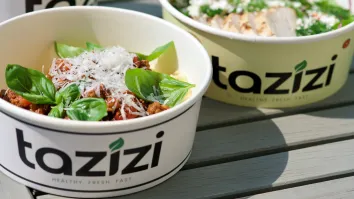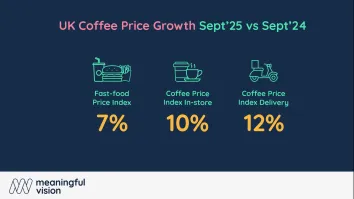
Southeast Asia's foodservice market to reach US$416.37b by 2030
Singapore is the region’s fastest-growing foodservice market, projected to rise at a CAGR of 17.2%.
The Southeast Asia (SEA) foodservice market, valued at $223.8b in 2025, is projected to reach $416.37b by 2030, rising at a compound annual growth rate (CAGR) of 13.2%, according to a report from Mordor Intelligence.
Singapore is emerging as the fastest-growing market in the region, with a projected CAGR of 17.2% through 2030.
Growth in Singapore is driven by its position as a regional innovation hub and early adoption of foodservice technologies, which often set trends across Southeast Asia.
High incomes and tech-savvy consumers support premium dining, delivery platforms, and advanced operational systems, contributing to stronger profitability relative to other markets.
Restaurants across Southeast Asia are increasingly leveraging data analytics to improve sales and customer engagement.
Personalised menu recommendations and dynamic pricing have raised average order values by 35% to 40%, whilst “build-your-own” meal options have improved gross margins by around 25% and simplified inventory management.
Machine learning tools are being used to target promotions more effectively, achieving conversion rates up to three times higher than traditional marketing methods.
Integrating loyalty programs with point-of-sale systems allows real-time personalisation, boosting repeat purchases among active users by roughly 45%.
Chain restaurants in the region are expanding rapidly, with a CAGR of 13.4%. Access to funding and streamlined operations enable faster scaling across multiple markets.
Investment in technology and supply chain efficiency allows chains to cut food costs by 15% to 20% whilst maintaining consistent quality, giving them an edge over independent operators.
Regional examples include Jollibee, which has grown to 200 stores in Vietnam and acquired Compose Coffee for $340m.
Franchise models are also becoming more common, combining operational efficiency with local market expertise to accelerate growth and reduce capital needs for parent companies.
The recovery of tourism has further supported the sector, with international visitor spending on food and beverages rising by 180% between 2022 and 2024, according to the ASEAN Secretariat.
Hotels are offering more premium dining experiences, such as chef-led tasting menus and themed restaurants, resulting in a 40% to 50% increase in food and beverage revenue per available room.
Dining at airports and transit hubs is evolving into a key part of the travel experience. Companies like Minor International are expanding casual premium dining options for both travellers and local customers.
In addition, digital platforms are increasingly used to promote local cuisines, linking tourism and foodservice to generate new revenue streams.























